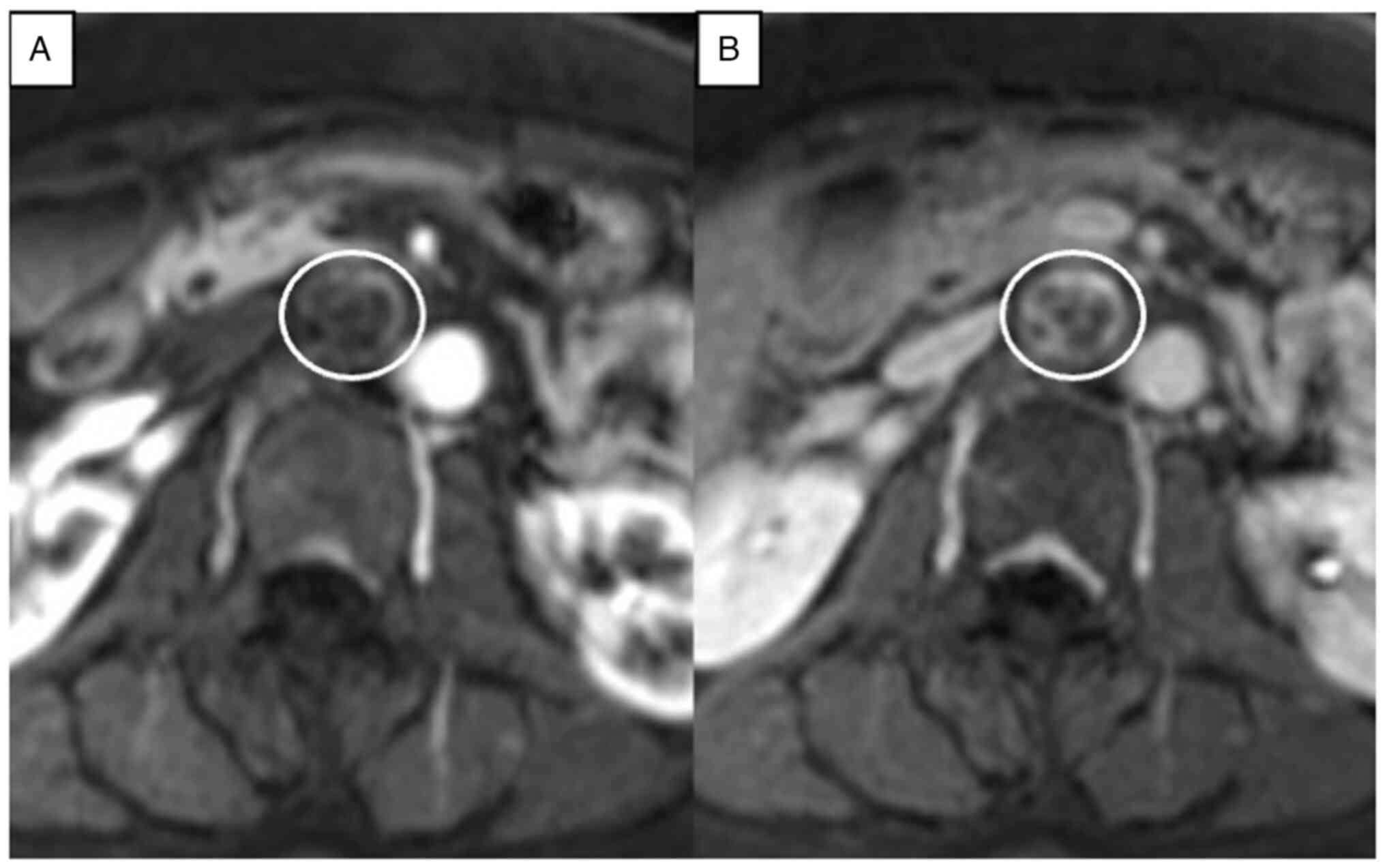Primary anastomosing hemangioma as a preoperative diagnostic mimicker of retroperitoneal cavernous hemangioma: A case report
- Authors:
- Published online on: April 9, 2024 https://doi.org/10.3892/ol.2024.14386
- Article Number: 254
-
Copyright: © Ishido et al. This is an open access article distributed under the terms of Creative Commons Attribution License.
Metrics: Total
Views: 0 (Spandidos Publications: | PMC Statistics: )
Total PDF Downloads: 0 (Spandidos Publications: | PMC Statistics: )
Abstract
Anastomosing hemangioma (AH) is rare and a newly recognized variant of capillary hemangioma that is mostly found in the genitourinary tract. Additionally, AH is sometimes difficult to diagnose without pathological specimens. It is difficult to diagnose preoperatively due to the lack of specific clinical and radiologic appearance. The present report describes the imaging features from a radiological perspective and outlines the clinicopathologic features and treatment options. A 67‑year‑old woman was referred to Dokkyo Medical University Saitama Medical Center (Koshigaya, Japan) for a retroperitoneal tumor that was identified at a medical checkup 4 years prior. The patient had no symptoms, no abnormal physical signs and no past medical or specific family history. Routine blood tests were all within the normal ranges. A nonenhanced CT scan showed a circular, homogenous, well‑circumscribed retroperitoneal tumor that was ~32x23 mm in size, between the abdominal aorta and the inferior vena cava, and just below the left renal vein. On a contrast‑enhanced multidetector CT scan, the tumor showed heterogeneous septal enhancement in the arterial phase and persistent enhancement in the portal phase. The tumor was diagnosed as a benign neurogenic tumor or a retroperitoneal cavernous hemangioma at the time, and the patient was intended to be followed up at the outpatient clinic. However, it gradually increased to a maximum diameter of 35 mm over 4 years. Finally, it was completely resected by open laparotomy and pathologically diagnosed as AH. Retroperitoneal hemangioma is extremely rare in adulthood and has been confirmed in only 1‑3% of all retroperitoneal tumors. To the best of our knowledge, only 6 cases of para‑aortic AH have been reported. The incidence of this variant is very low. However, AH may be included in the differential diagnosis when a slowly progressing heterogeneous mass appears in the para‑aortic region that exhibits a CT‑enhanced pattern similar to a typical cavernous hemangioma.


















